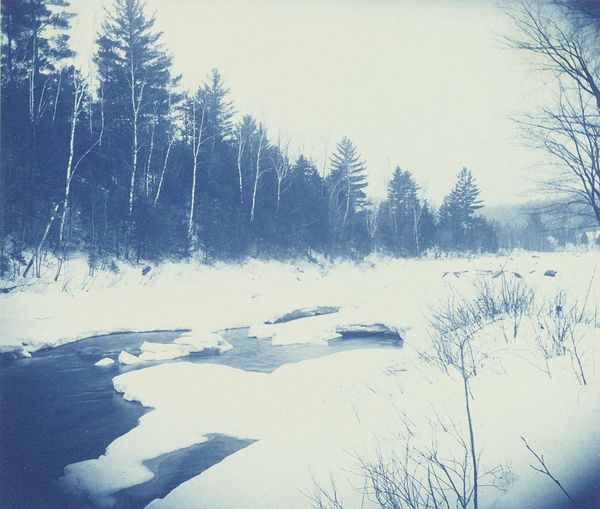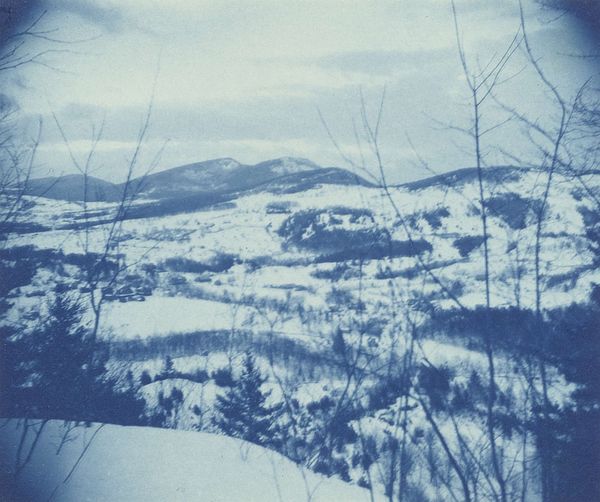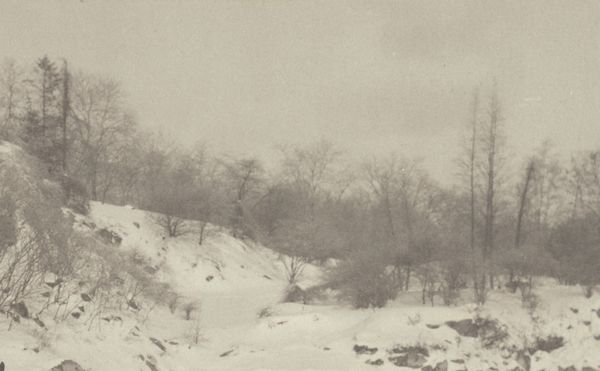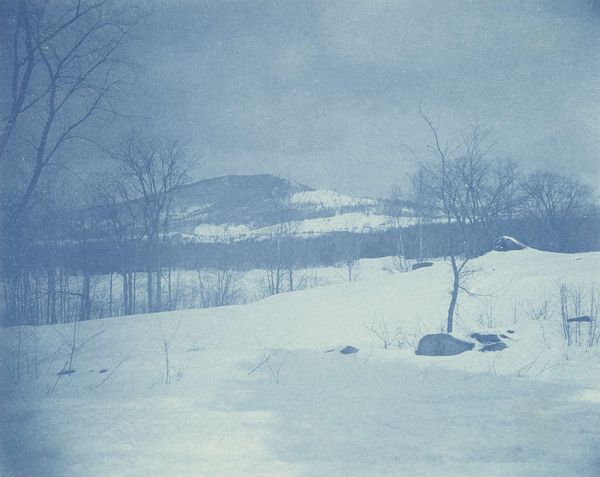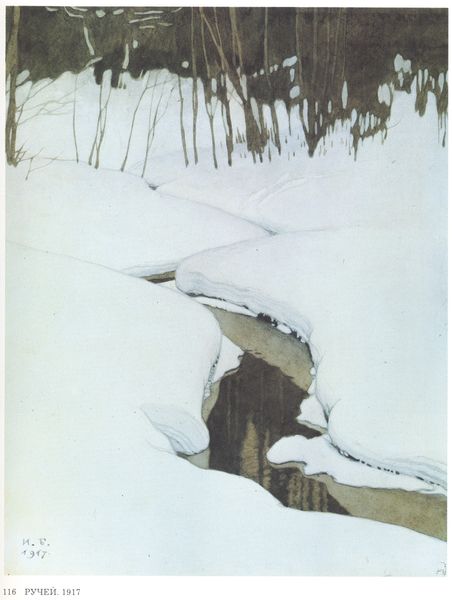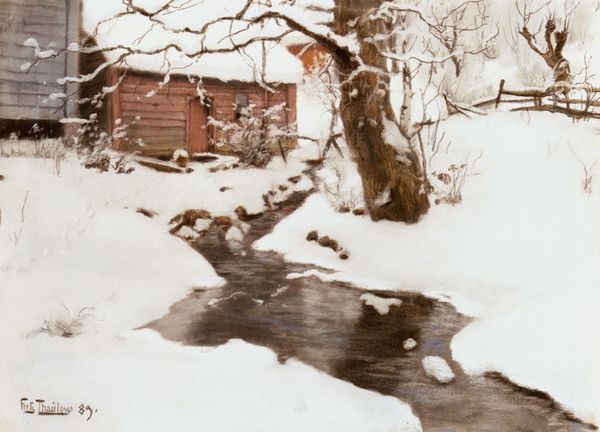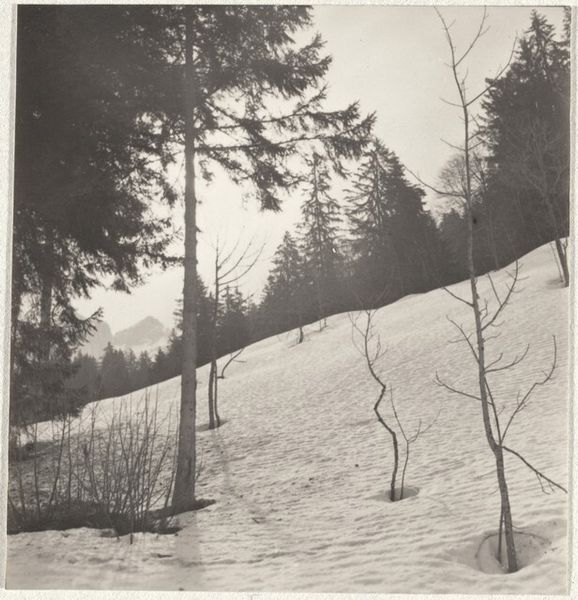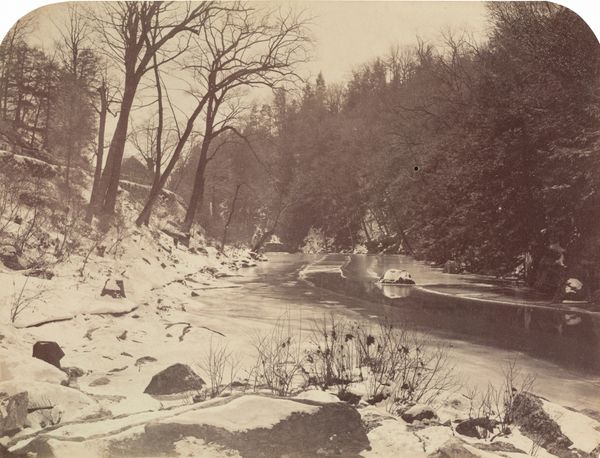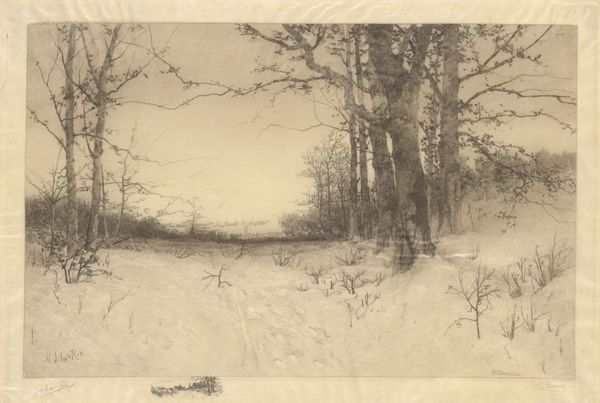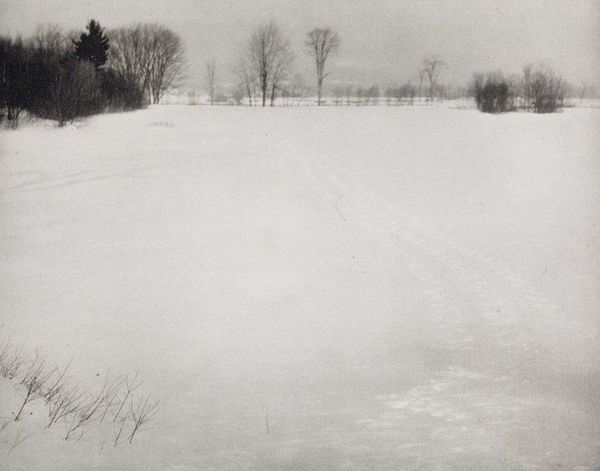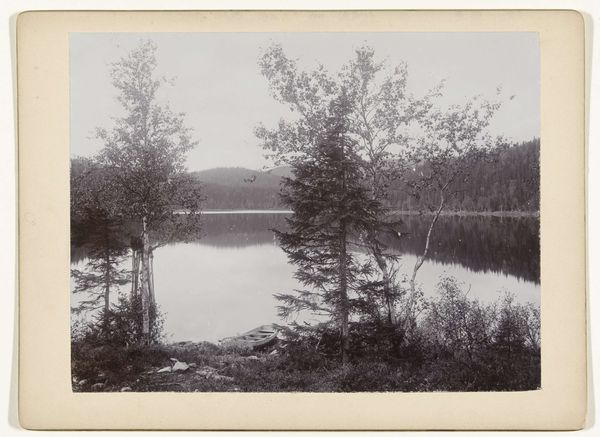
Landschap in de sneeuw: Ellis River bij Iron Mountain House, NH, Verenigde Staten Possibly 1899
0:00
0:00
print, cyanotype, photography
# print
#
landscape
#
nature
#
cyanotype
#
photography
#
naturalism
#
watercolor
Dimensions: height 92 mm, width 112 mm
Copyright: Rijks Museum: Open Domain
Curator: Looking at this cyanotype print, I'm struck by how delicate it is; the monochromatic blue creates an almost ethereal landscape. What’s your first impression? Editor: A kind of stark, winter beauty, wouldn’t you say? “Landschap in de sneeuw: Ellis River bij Iron Mountain House, NH, Verenigde Staten” gives a strong sense of place, a portrait of the American Northeast in what we believe is around 1899. I find myself thinking about the relationship between nature and tourism that must have been growing there at the time. Curator: Exactly. What’s interesting is that Charlotte M. Endicott, who created this image, used a process that democratized image production. Cyanotypes allowed photographs to be reproduced relatively easily. What impact did that accessibility have, particularly given that photographs were starting to displace painting as a form of representation? Editor: Good question. Think about the distribution networks; places like Iron Mountain House would have been ideal venues for displaying and selling such works to capture and share landscape views to tourist markets. Were they viewed as 'lesser' art because of the relative ease of production, compared to the labor of painting? I wonder how the burgeoning conservation movement may have influenced the artistic interpretation and distribution of natural scenes in America at the time. Curator: Well, perhaps it was both a celebration and a critique. On the one hand, it depicts the pristine landscape. Yet the very act of photographic reproduction inherently raises questions about commodification and the industrial gaze on the natural world. Was nature being consumed or conserved through its photographic image? Editor: It does highlight that complicated negotiation. It makes me curious about Endicott. Was she trying to highlight the sublime quality of the landscape, or offering it up for consumption? Curator: That push and pull between accessible artistic practices and more 'esteemed' outputs shows a moment where these divisions blur. It pushes us to re-evaluate the labor inherent in photographic printmaking as a medium, even one like a cyanotype that democratizes process. Editor: Looking closer, the composition draws the eye towards the treeline, offering a sense of journey and inviting the viewer into that shared American experience. What I see in the artwork by Charlotte M. Endicott is about showing, sharing, and ultimately about democratizing an experience, especially one of witnessing nature's quieter side. Curator: I agree completely, seeing it beyond merely art, to appreciate its materials and production in culture more fully.
Comments
No comments
Be the first to comment and join the conversation on the ultimate creative platform.
